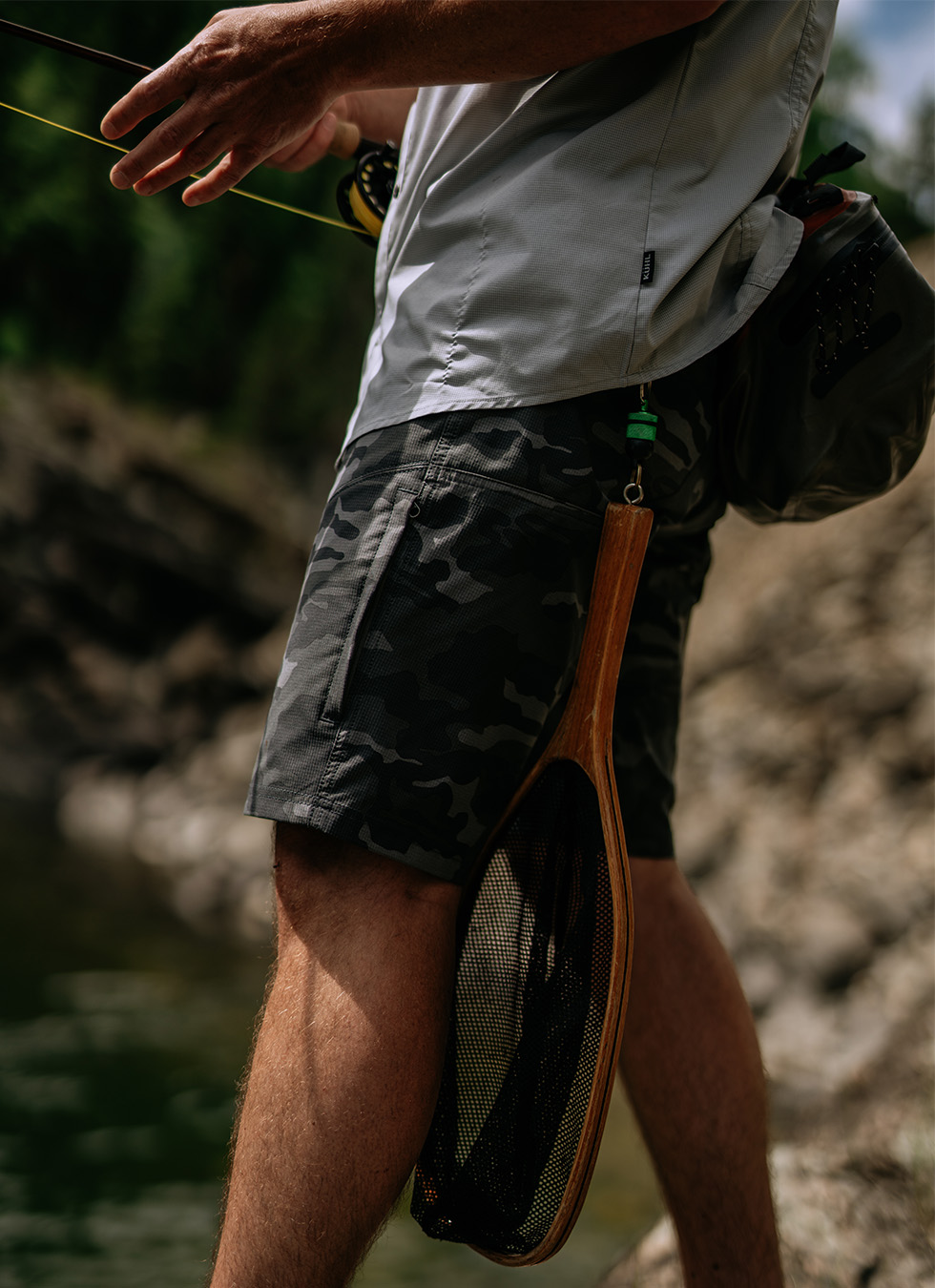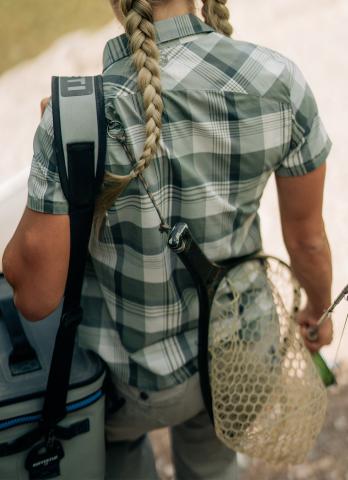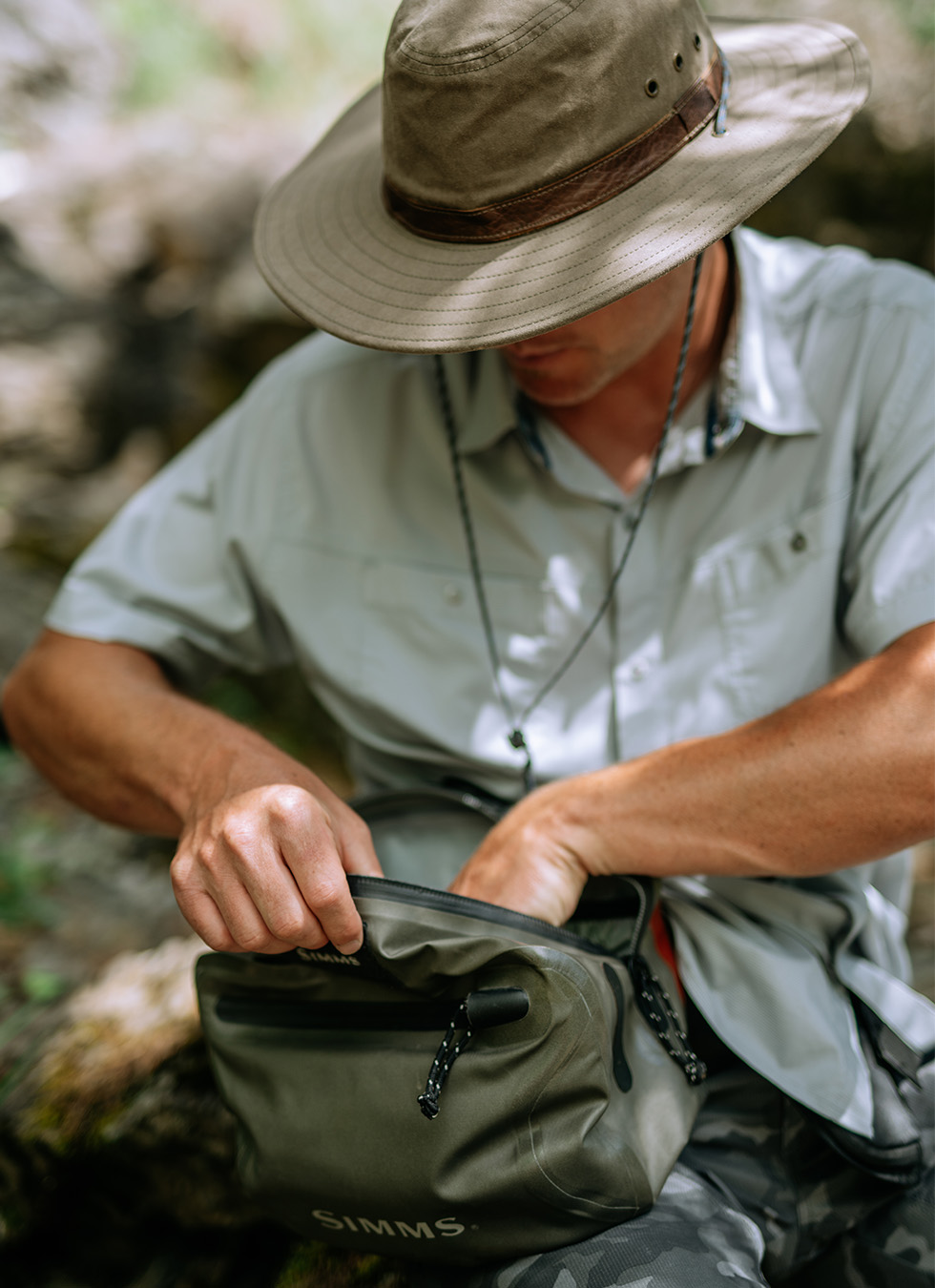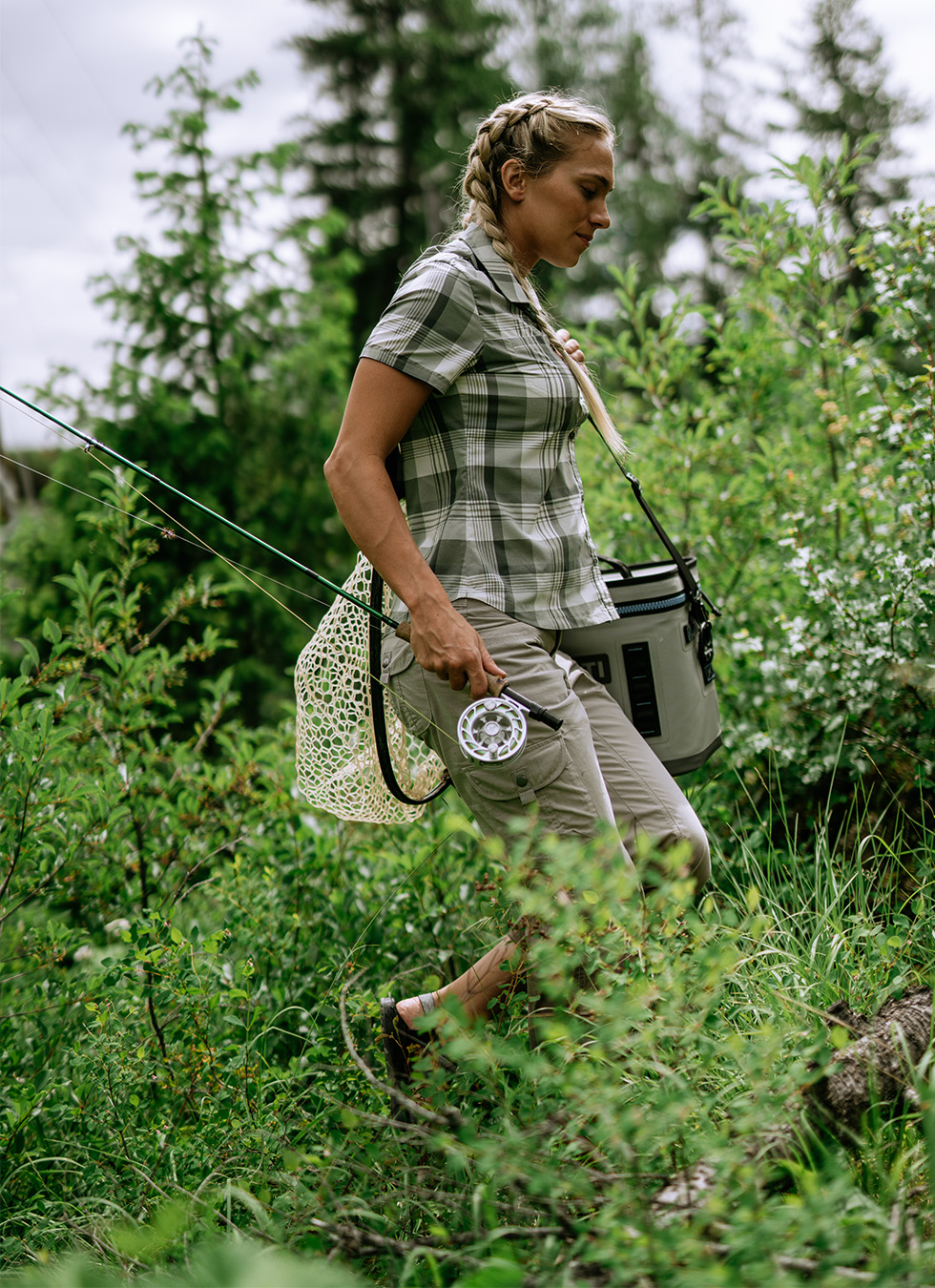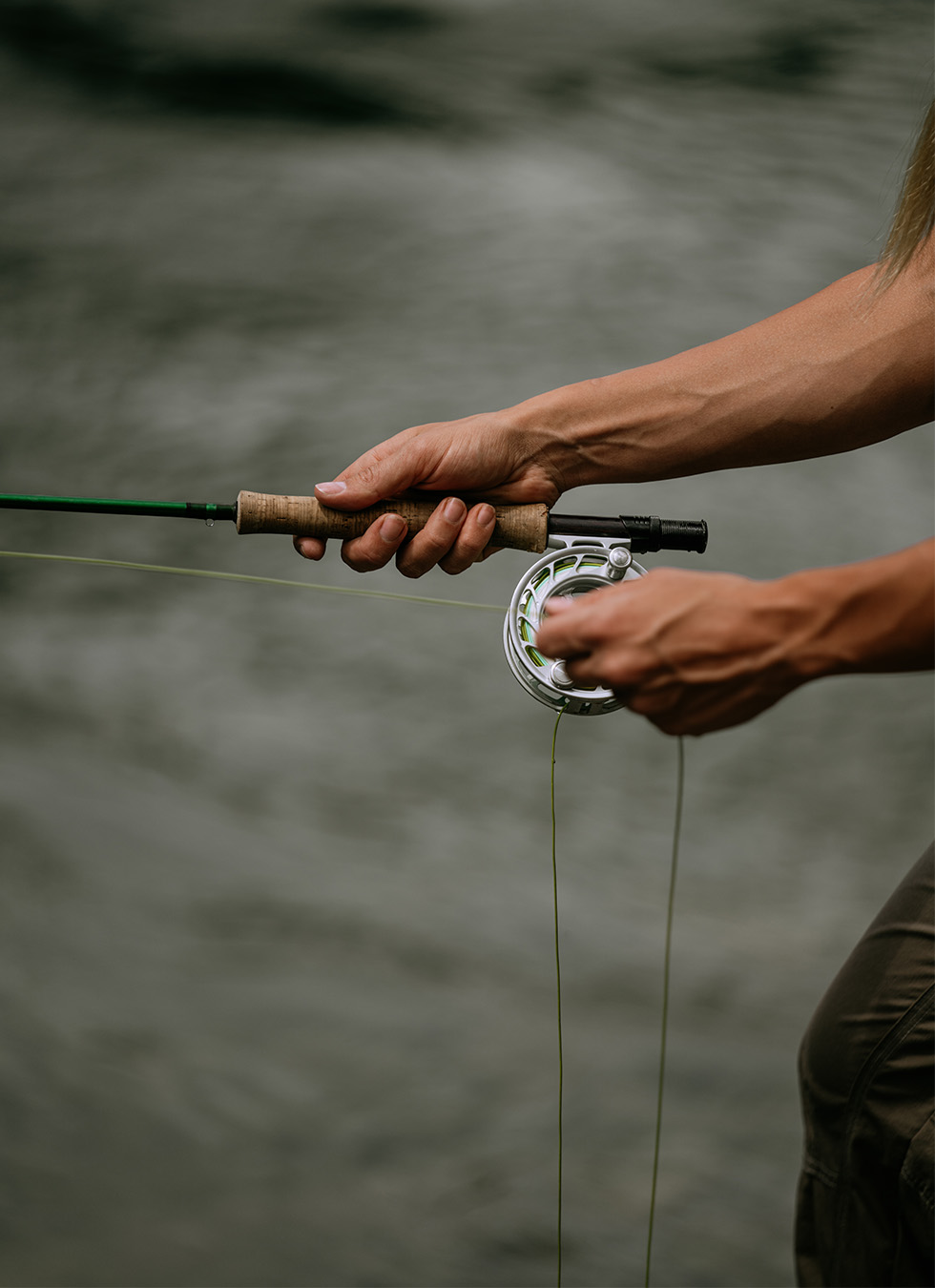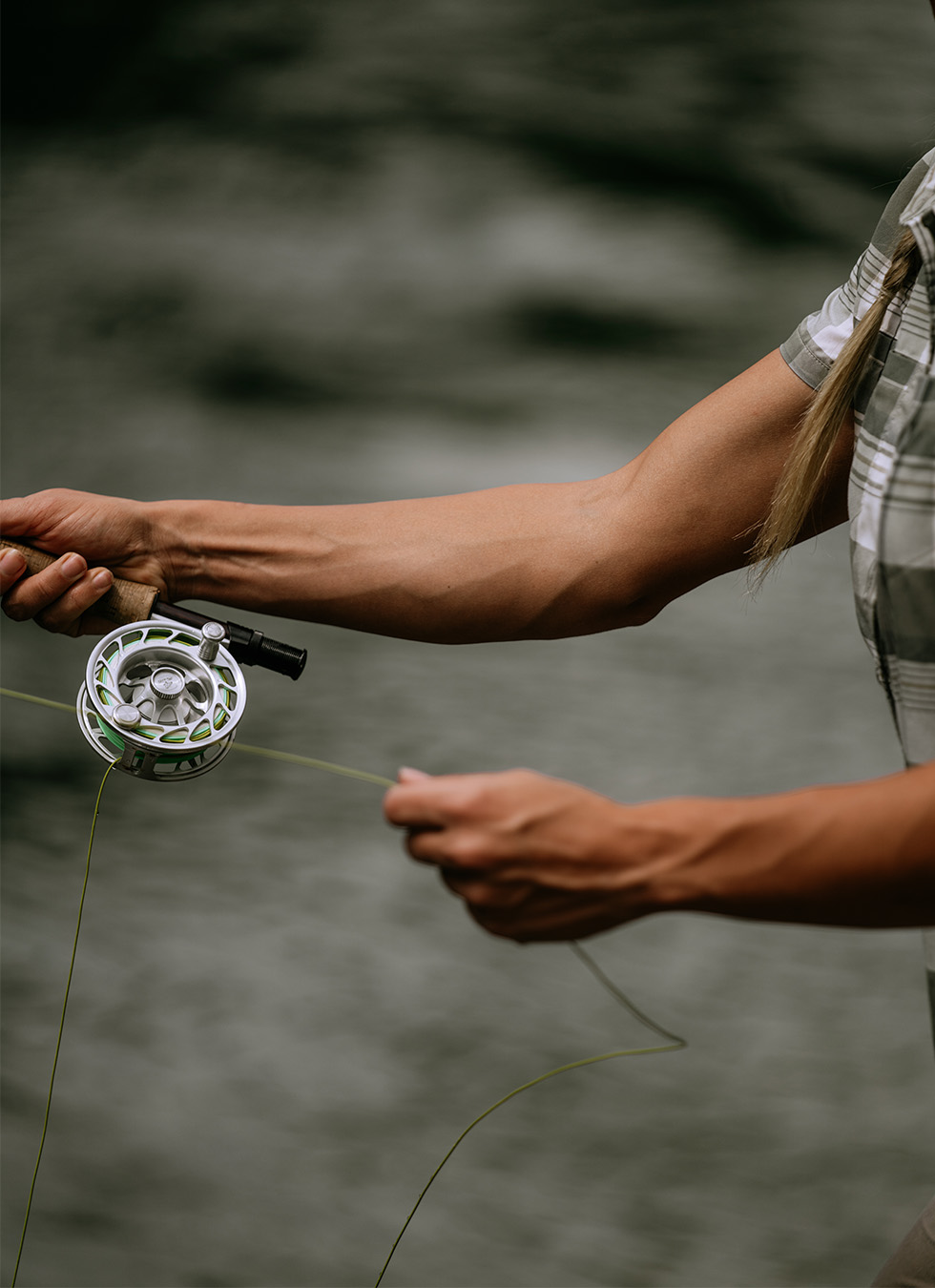- 1. Key Takeaways
- 2. Fly Fishing 101 - The Basics for Beginners
- 2.1. How is it different from regular fishing?
- 3. Fly Fishing Gear
- 3.1. Fly Rod
- 3.2. Fly Reel
- 3.3. Fly Line
- 3.4. Flies
- 3.5. Landing Net
- 3.6. Hemostats
- 3.7. Sharp Fingernail Clippers
- 3.8. Dry Fly Floatant
- 3.9. Microfiber Cloth
- 4. Personal Gear
- 4.1. Sunglasses
- 4.2. Personal Flotation Device
- 4.3. Waders, Boots, and Belt
- 4.4. Clothing Made With UV-Resistant Fabric
- 4.5. Ball Cap or Brimmed Hat
- 4.6. Things You Don’t Need Right Away
- 5. How to Start Fly Fishing: Step-By-Step
- 6. Fly Fishing Casting 101
- 6.1. Types of Fly Fishing Casts
- 7. Choosing the Right Spot
- 8. How to Handle Fish Safely?
- 8.1. What if the Fish is Fighting to Get Away?
- 9. Our Beginner’s Tips on How to Prepare For Fly Fishing
- 10. Final Thoughts
- 11. FAQs
- 11.1. What are fly fishing disadvantages?
- 11.2. Where is fly fishing most popular?
- 11.3. Is fly fishing versatile?
- 11.4. Are flies better than lures?
- 11.5. Why are fly rods so expensive?
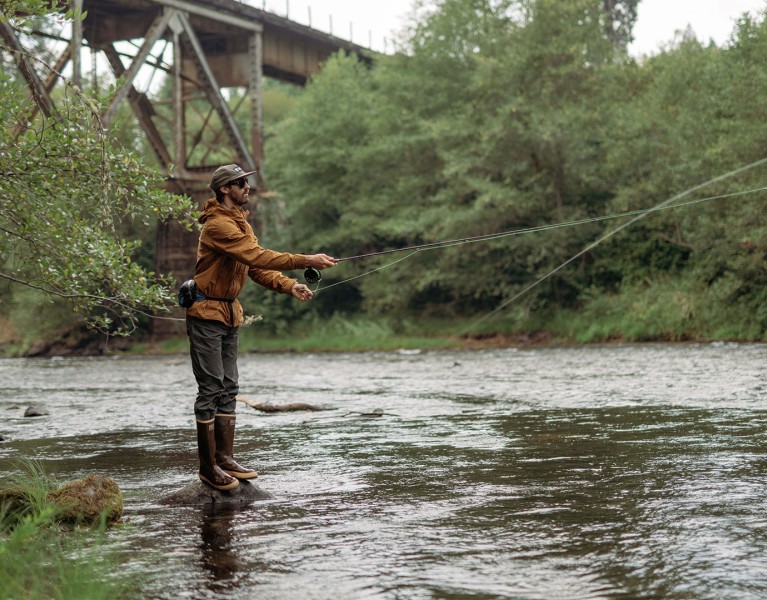
Beginner’s Guide on How to Fly Fish - All You Need to Know
Table of Contents [Show]
What's keeping you from wading into fly fishing? If you're like me, you might have been intimidated by the break-in cost, the misconception that it's overly technical, and the fact I didn’t know how to fly fish.
There's indeed a lot of jargon and a little math mix, but trust me: if I can juggle fly fishing numbers, anyone can. So, here’s a neat fly fishing tutorial that’ll help you feel more confident about building your first fly-fishing combo.
Key Takeaways
- Gear Up Right: The basics include a fly rod, a fly reel, a fly line, a leader, and tippet, and of course, the fly itself. Each piece of equipment is unique to fly fishing and plays a crucial role in your fishing experience.
- Practice the Casting Dance: Fly fishing isn't a game of power but of rhythm and finesse. Whether you're mastering the grace of the overhead cast, finessing the roll cast in tight corners, or reaching for the horizon with a double haul, it's all about getting that practice in and finding your groove.
- Know Your Flies: Flies are designed to mimic the natural food sources of the fish. Understanding the basics about the different types of flies, such as dry flies, wet flies, nymphs, and streamers, will help you decide which to use.
- Read the Water: Learning to interpret the water's currents, depths, and the likely spots where fish might be hanging out is vital. Pay attention to the environment, including insect activity and weather conditions.
Fly Fishing 101 - The Basics for Beginners
At its core, fly fishing is an artful blend of rhythm and finesse, where you use a special rod, a weighted line, and a handmade artificial fly to lure your catch. But this isn't your average cast-and-wait fishing. Instead, you’re often casting and recasting, trying to tempt the fish into biting. This hands-on approach keeps you engaged, as you're constantly interpreting the flow of the water, weather, and fish behavior.
How is it different from regular fishing?
Think of the difference between fly fishing and regular fishing, like the difference between ballet and breakdancing: they're both dances, but the technique, style, and rhythm are totally different.
- The equipment is different - In fly fishing, you're using a lightweight fly and a heavier line to make your casts, which is the opposite of traditional fishing, where you have a heavier lure and a lighter line. This change-up means that casting in fly fishing is all about creating loops and rhythm - it's a dance between you, the rod, and the line.
- There’s a difference between flies and lures or bait - Flies are designed to imitate insects, small fish, or other prey that fish feed on. They're usually made of feathers, thread, and a bit of sparkle tied onto a hook - a far cry from the plastic or metal lures used in traditional fishing.
- Fly fishing is more interactive - You're constantly casting, stripping, and retrieving, aiming to entice the fish to strike your fly. This contrasts with a lot of traditional fishing methods where you cast out your baited hook, sit back, and wait.
In short, fly fishing is less about the hunt for the biggest catch and more about the challenge of the cast, the selection of the fly, and reading the water. But how do you fly fish?
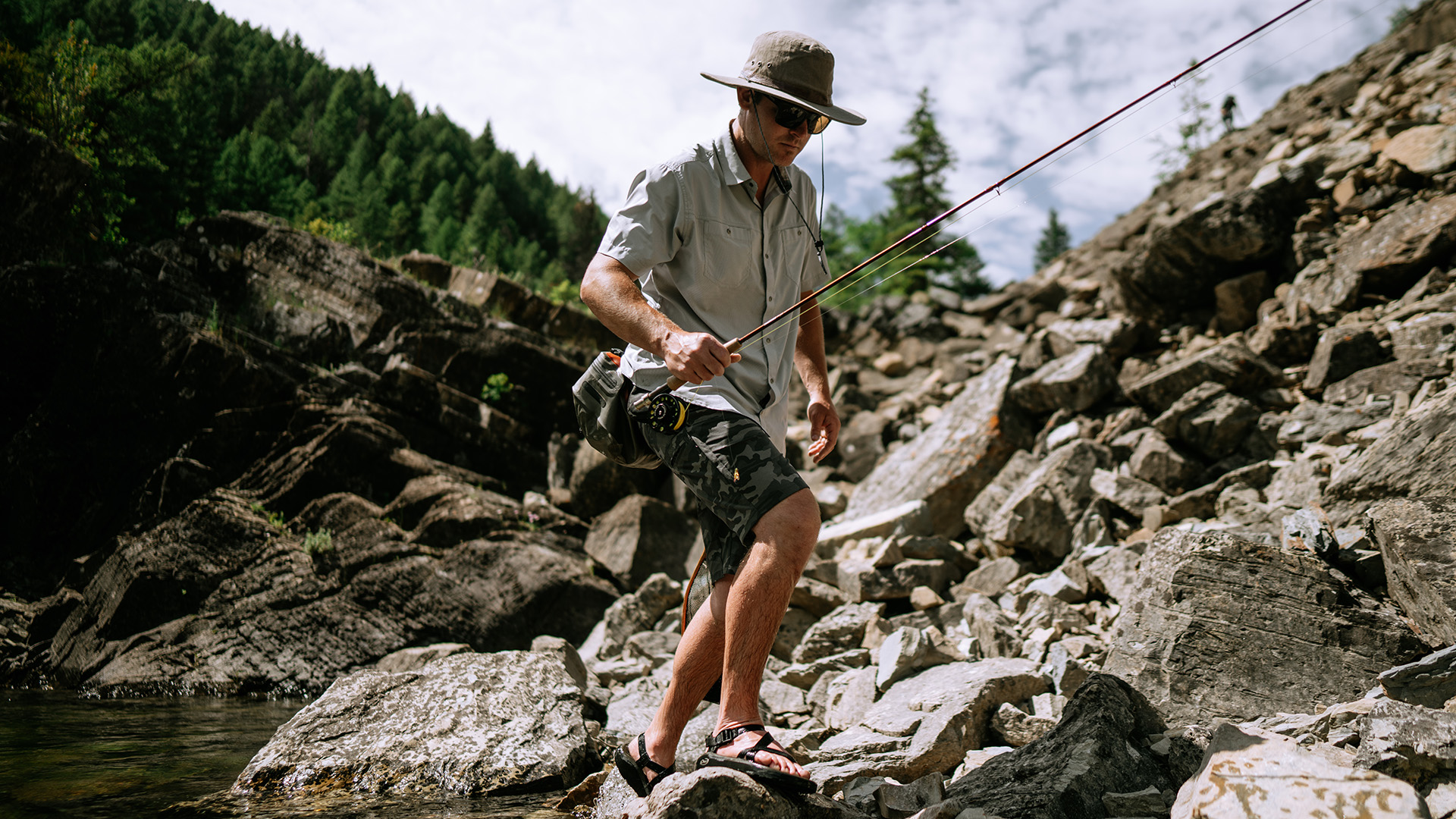
Fly Fishing Gear
Here's where things easily get out of hand. When newbie fly anglers buy their first fishing vest, they're compelled to fill every pocket to capacity. I was one of them, and I blame it on that "I'll only need it if I don't have it with me" anxious feeling. I spent a ton of money straight out of the gate and spent half my time on the water digging through my vest, looking for stuff I really didn't need in the first place.
Here's what I'd do if I could talk some sense into 25-year-old me: I'd pick up a waist pack with enough room for a fly box, a leader wallet, and these essentials:
Fly Rod
The fly rod is your trusty partner on the water, and its attributes will hugely impact your fishing game. Fly rods range in length, usually from about 6 to 10 feet, but the nine-foot ones are fairly standard. Picking the right length depends on the environment you'll be fishing in and the size of fish you're after - longer rods can cover more distance, while shorter ones give you better control in tight spaces.
Now, onto weight. In fly fishing, when we talk about 'weight,' we're not referring to the actual heft of the rod but rather to the size and weight of the fly line that the rod is designed to cast. This can range from 1 (lightest) to 12 (heaviest). A 4-6 weight rod is great for small trout and panfish, while an 8-9 weight is better suited for larger fish like salmon or bonefish.
Each rod has its own action or flexibility. Fast-action rods are stiffer, offering power and distance, perfect for windy conditions or larger bodies of water. Medium and slow-action rods are more flexible, allowing for a slower, more relaxed casting rhythm, which is great for smaller streams.
You can also opt for rods that break down into two to six segments. Four is ideal for me and plenty packable if I attach my rod case to my pack's exterior.
Choosing a fly rod can feel a bit like picking out a wand in Harry Potter - it’s all about finding the one that fits your style, your target fish, and the places you’ll be fishing.
Fly Reel
Entry-level fly anglers should view their first reel as nothing more than a shiny line dispenser. Most brands' budget models are just fine for the casual beginner, and if you take care of it, it will serve you well for years. Shell out for one or two extra spool cartridges so you can change between floating and sinking lines. Some anglers will even throw a 6wt line on a 5wt rod if the conditions warrant it.
A single reel is rigged up with four separate types of lines. Hooray, four more decisions to make!
Fly Line
Fly fishing lines are made with a supple, polymer coating over a braided or mono core. The coating thickness, and positioning of that extra girth, determines how weight is distributed on the line; this affects how powerfully and accurately the line will cast over distance and in heavy winds. Weight-forward fly lines are ideal for the entry-level angler, given their versatility. Global Flyfisher has perhaps the best articles about fly line anatomy, and it belongs among your top five fly fishing bookmarks.
Line manufacturers apply special finishes to the coating that cause them to either float on the surface or sink below. Then there are floating lines with sinking tips. I recommend you select a floating line for your first rig since you can always add sinking leaders and tippets.
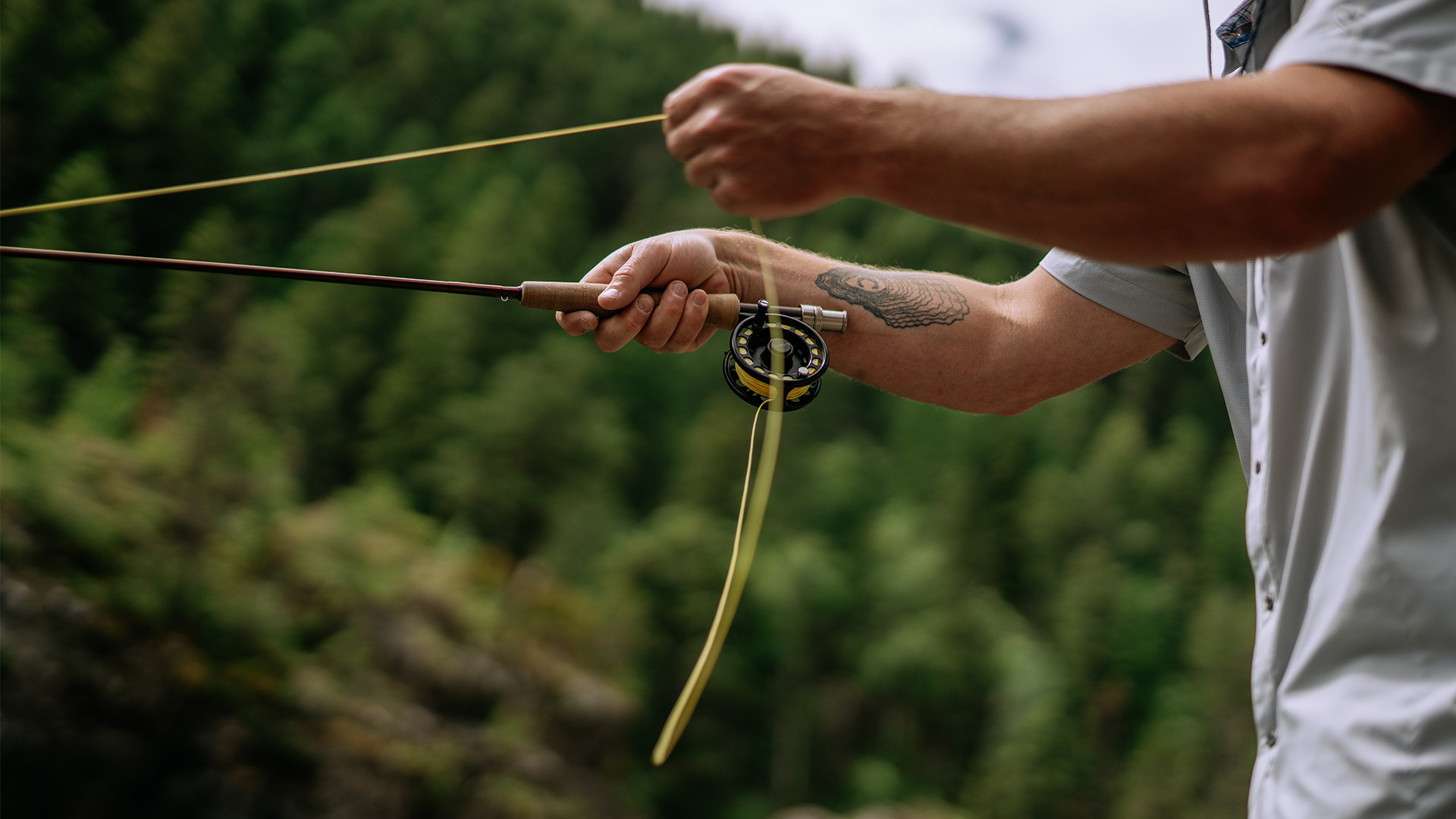
Selecting the right weight for your fly rod, reel, and line
A combo's weight class corresponds not to the line's breaking strength but to the weight of the first 30 feet out of the reel. Anglers choose their gear's weight rating according to game species and conditions, with 1wt being for betta fish in Solo cups and 15w being for giant white whales 20 miles off the coast of Newfoundland. Somewhere in the middle is the sweet spot for anglers fishing the most common inland trout waters.
If you ask around for opinions on the best all-around fly rod weight for trout, you'll probably get caught between the 5wt and 6wt camps.
"It reminds me a bit of those arguments over whether a .270 or a 30.06 is the best caliber for a deer rifle," wrote Steve Mathewson in "Is the 5 Weight Fly Rod the Best All-Around?" for 2 Guys and a River.
In that article, he breaks up the fight with some excellent reasoning for each. In short, if you expect to fish mostly in large rivers or in windy canyons, lean towards 6wt. If you're going for calm days on the banks of slow-moving water across which you can toss frosty beer cans to your buddies, go with 5wt. And pick up your litter.
Backing
Connecting the reel's core (arbor) and the fly line, backing adds bulk to prevent the pliable fly line from retaining "memory," or semi-permanent curls in its length. But backing is more than just filler. You'll rarely use up your entire fly line if you're fishing inland waters, but a high-quality, rot-resistant braided Dacron or polyester backing serves as a "reserve" for those unexpected lunkers.
Monofilament leader
Fly lines are generally brightly colored, so we can see how they lie on the water, but their footprint on the water's surface is hardly subtle to fish. That's where the leader and tippet come in.
The leader is a long (usually about eight or nine feet), tapered length of translucent monofilament line that's matched to both your rig's weight and the fly pattern sizes. The thick (or "butt") end test will be three to four times heavier than the forward tip, and the taper tends to level off to a continuous diameter in the final third of the leader. Back in the day, anglers would have to build their own tapered leaders by tying together several successive lengths of mono, but modern manufacturing produces "knotless" tapered fly fishing leaders.
Monofilament leaders float better on the surface and are more forgiving than more brittle fluorocarbon products, though you'll want to consider the latter as your skills improve. Fluorocarbon is all but invisible in the water, and many anglers prefer it for nymph fly fishing.
Tippet
This is the hair-fine, highly-sensitive final component of your fully outfitted fly reel. While you could tie your fly directly to the end of your tapered leader, you'll quickly lose that taper after swapping out a dozen or so patterns. The tippet itself isn't tapered; it usually comes packaged in a small spool. For your 5wt or 6wt setup, you'll tie anywhere from two to four feet to the tip of your leader.
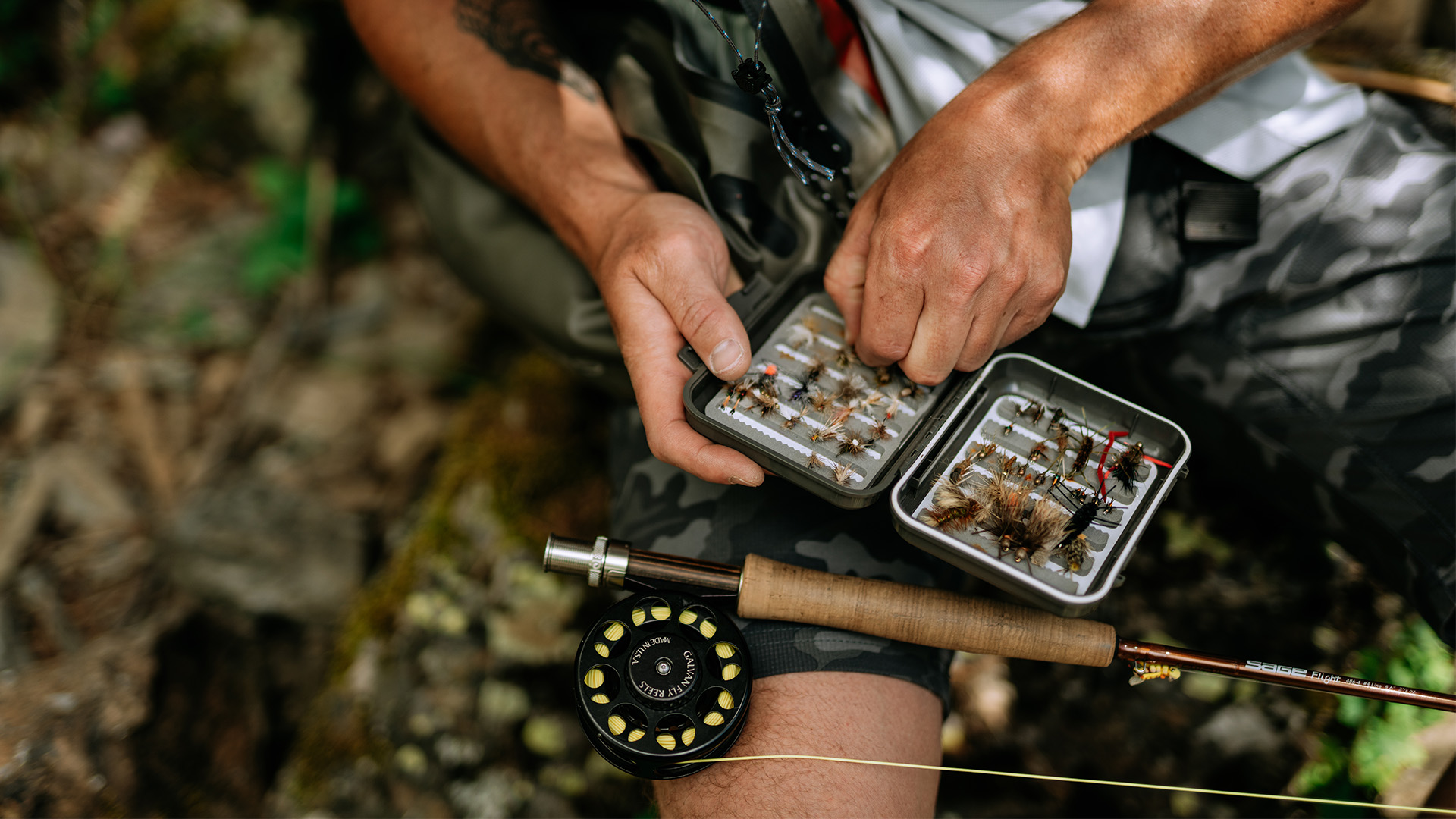
Flies
I wanted to collect fly patterns long before I even knew the difference between a streamer and a nymph. I couldn't leave a sporting goods store without a dozen of those plastic condiment cups full of colorful hand-tied flies. I'd read that you're supposed to "match the hatch," and in my mind, that translated to having a collection that included patterns in every size, shape, and color.
That's not the case. While you want to use a chart to match the fly size to your fishing line, your flies don't have to match every detail of active "natural" insects. A fly box stocked with these versatile patterns gives you everything you need to mimic the most common species and life cycle stages found on inland trout waters under the widest range of environmental conditions. Learn when to use them, how to fish them, and how to tie them.
Nymphs
These are juvenile insects that dwell under the water's surface. You'll fish them suspended in the water column, bounce them along the bottom, or let them drift in the current.
- Pheasant tail nymph
- Bead-head hare's ear
- Prince nymph
- Gold-ribbed hare's ear
Emergers
Fish emerger patterns at the top of the water column or within the surface tension. These flies simulate adult insects emerging from their "husks" during the hatch. Emergers are excellent starter patterns for anglers new to fly tying. Live emerging insects don't look their best, and a lot can go wrong in the process. Sometimes, the biggest emerger tying fails are the most successful on the water. Think low-hanging fruit, and you'll know what I'm talking about.
Many emerger patterns are tweaks on popular dry flies.
- Blue-winged olive (BWO) parachute emerger
- Sparkle dun emerger
- CDC mayfly emerger
Dry flies
Dry fly patterns play on top of the water's surface tension, imitating invertebrates that have fallen off riparian plants, exhausted themselves from mating, or are in the process of laying eggs. These patterns produce results under a wide variety of conditions and are relatively easy for the new angler to fish.
- Parachute Adams
- Elk hair caddis
- Blue-winged olive
- Griffith's gnat
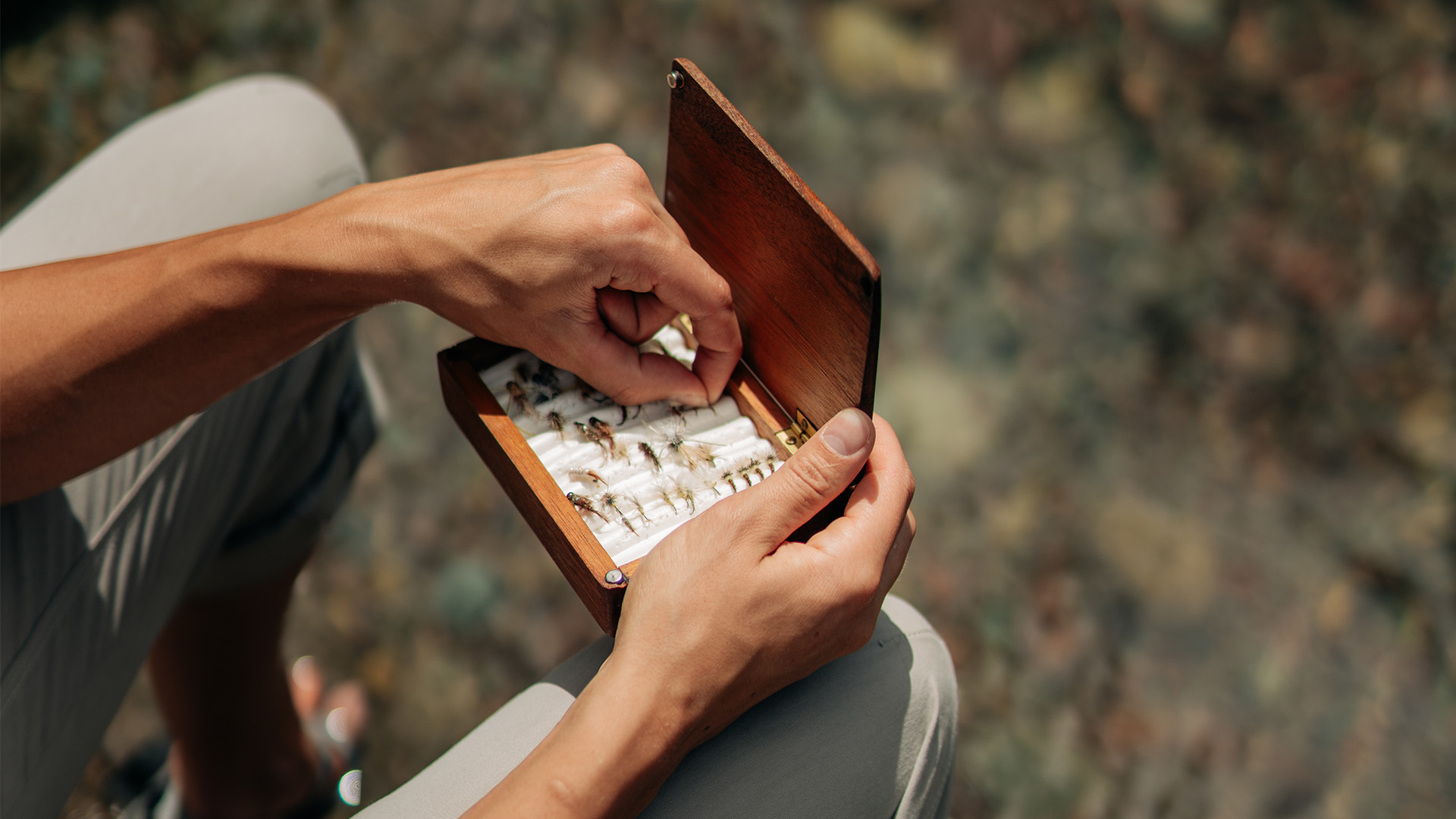
Streamers
These are the fly angler's counterparts to traditional lures. Streamers imitate swimming bait species such as crayfish, leeches, and minnows. They're not intended to be spot-on replicas of the species they're imitating. Color, silhouette, and action are more important than getting nailed in a lineup. These are also easy and fun to tie. You can challenge yourself by improvising with materials found at home, like bits of trash stuck in your truck's cup holders or bankside flotsam and jetsam. First, though, you might want to stick with tried-and-true basic streamer recipes:
- Woolly bugger
- Sculpzilla
- Muddler minnow
Start with a mix of black and olive patterns, and throw in some dark purples, rusty reds, and pearlescent white themes as you grow your collection. I like to fish darker streamers when the water's on the muddy side and lighter streamers with a bit of sparkle when the sun's out and the water's clear.
Worms and eggs
Trout will chow down on eggs during the spawning season (spring for rainbows, fall for browns), but they can be picky. Choose a variety of patterns that resemble single eggs or clusters in a variety of bright pink, chartreuse, and salmon colors.
As for worms? Well, you can't go wrong dead-drifting any simple worm pattern after rain.
- Glo-bug egg
- Otter's soft milking egg
- Chamois worm (with bead, and without)
- San Juan worm
Landing Net
The most responsible method for securing your fish before release is with a net., and the net's frame shape isn't as important as the "bag." In an article for the Chinook Observer, research biologist Robert Lennox said, "We found that rubber mesh nets with large mesh were the best option after comparing fin fraying, scale loss, and mucous loss of brook trout landed with different net types and with bare wet hands." Most of us buy nets with easy-release clips that will attach to a loop on our vest back panels or to our belts.
Hemostats
Hemostats for holding hooks as you tie them to your tippet or dress the fly. I've found the best deals at army surplus stores, and I usually buy a few.
Sharp Fingernail Clippers
Sharp fingernail clippers for cutting lines and trimming up hackles. Attach your clippers to a brooch-style retractable lanyard; you can use the pin to poke out clogged hook eyes.
Dry Fly Floatant
Dry fly floatant is a liquid gel dressing that "waterproofs" your flies. "Gink" is a favorite brand name, but like Kleenex, the word has become slang for any floatant solution. Just don't mix up your floatant bottle with your eye drops; they're about the same size.
Microfiber Cloth
Microfiber cloth for wiping down your fly line if it gets dirty. Keep your line clean, and give it a final squeegee before you put it away for the day.
Handy items you can stash in your gear without adding fifty cubic feet of storage space include yarn or foam strike indicators, a few tiny split shots, and a small file to sharpen your hooks. You'll quickly learn the difference between essential and dead weight after a season on the water. Still anxious? You can always keep the kitchen sink on the bank.
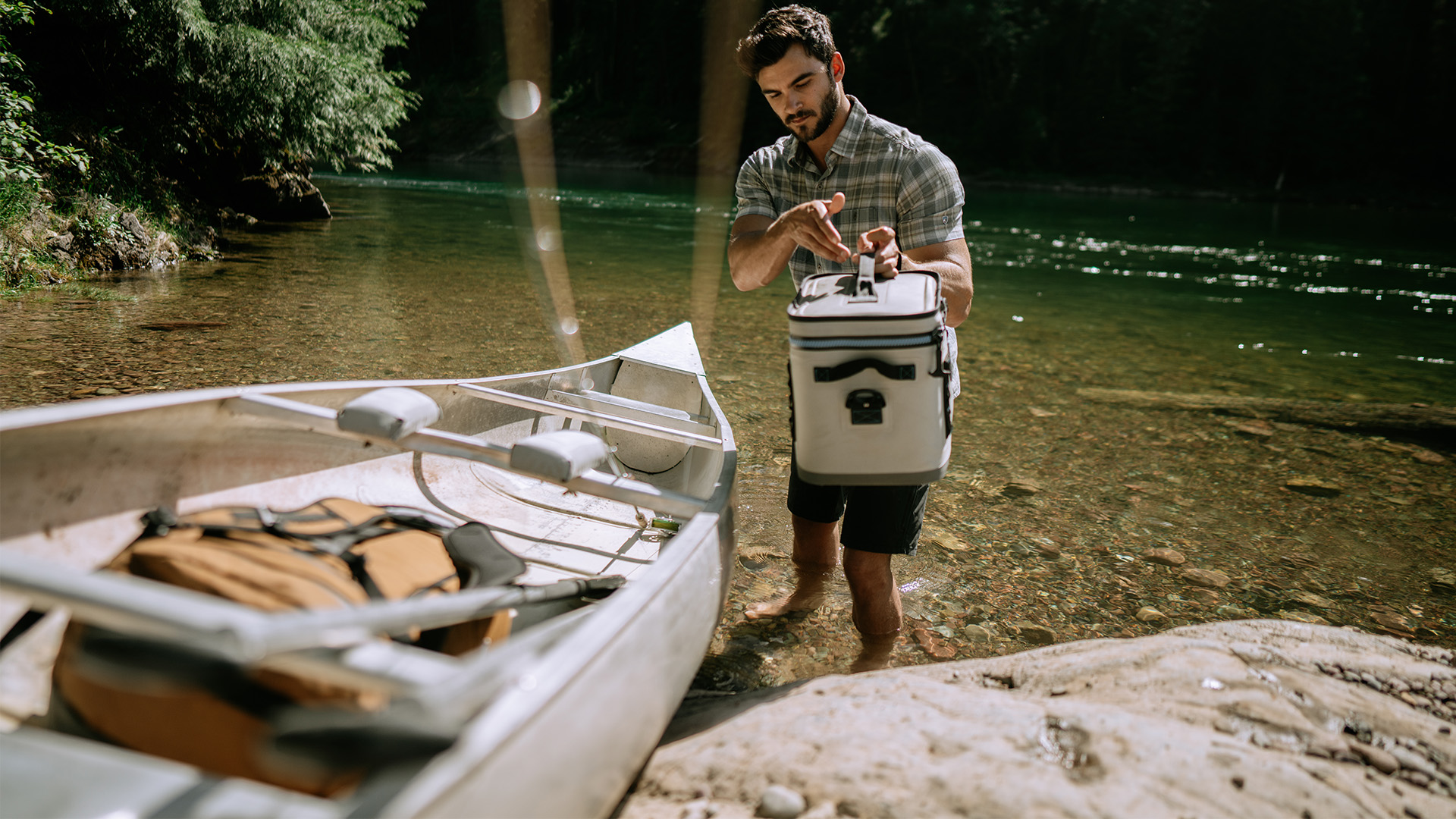
Personal Gear
Sunglasses
When you're surveying the water for trout, wear polarized sunglasses to cut down on glare and reduce reflections.
Personal Flotation Device
You don't need to be fishing from a boat to need a PFD. Slippery river rock is no joke, and anglers drown in shallow water every season. If you think you'll end up getting a fishing vest, look for a design that's a hybrid personal flotation device. Prefer that low-key waist pack? Self-inflating vest-style PFDs might be best for you.
Waders, Boots, and Belt
Wader material and style are very personal preferences. Just make sure your boot soles aren't felt, which can harbor invasive plant and mollusk species. Most important of all, don't wear waders without a belt. The suspenders keep 'em up, but a slightly elastic belt prevents water from rushing in and weighing you down if you take a dunking.
Trout love cold water, and you might too. If you decide to ditch the waders for some quick-drying fishing shorts or pants, don't leave your boots or trainers on the bank. At the very least, wear river shoes with grippy, puncture-resistant soles.
Clothing Made With UV-Resistant Fabric
It's not enough to rely on long-sleeved shirts for sun protection. Comfortable fly fishing outfits with an ultraviolet protection factor (UPF) of 25 or higher block 96% of sunlight's harmful radiation. Also, look for fly fishing pants that provide a full range of motion and have plenty of pockets.
Ball Cap or Brimmed Hat
Yes, we want you to protect your face from sunburn, but a hat and glasses also protect your scalp and eyes from poorly-executed casts. Nothing will send you packing to the barbless hook camp like an impromptu eyebrow piercing!
Things You Don’t Need Right Away
A Massive Fly Collection
Starting out, it's better to have a basic understanding of a few effective flies rather than a vast collection you don't know how to use. As you gain experience, you'll naturally expand your fly box.
High-End Rods and Reels
The sky's the limit when it comes to the cost of fly rods and reels, but when you're starting out, you don't need the top-shelf stuff. A solid, entry-level combo can serve you well as you learn the ropes.
Fancy Gadgets
From line cleaners to fishing thermometers and knot-tying tools, there are plenty of gadgets you can add to your fishing arsenal. But to start with, focus on mastering the basics and save the gizmos for later.
Advanced Fly Tying Equipment
Fly tying is an amazing part of fly fishing, and many anglers love this aspect of the sport. However, as a beginner, it's okay to start with pre-tied flies. You can delve into the craft of tying your own flies once you're more comfortable with the basics of fishing itself.
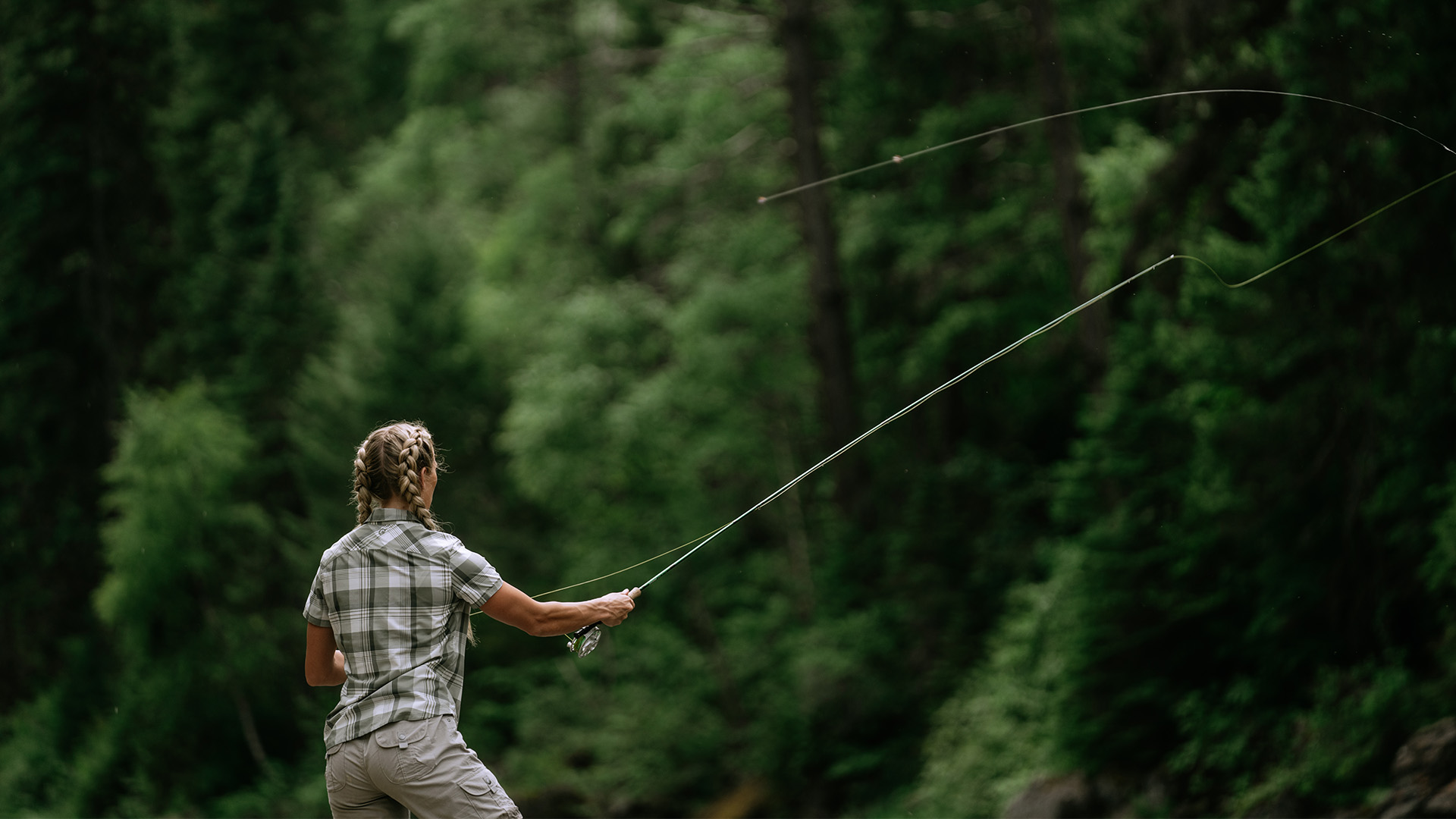
How to Start Fly Fishing: Step-By-Step
This is how fly fishing was explained to me - it is a beautiful blend of art and science, sort of like a dance that's as rewarding as it is fun. Let's walk through some simple steps to get you started on your fly fishing journey, which I’ll cover in-depth later in the article.
- Step 1: Gear Up - First, you'll need to gear up. A combo set is perfect for fly fishing beginners: it includes a rod, a reel, and a line, and the components are designed to work well together.
- Step 2: Learn the Basics of Casting - This is where the real art of fly fishing comes in. The basic cast is called the overhead cast, and it's a smooth, rhythmic motion that sends the line out over the water. Practice on dry land before hitting the water.
- Step 3: Understand the Fish - Learn about the species you're targeting, where they live, what they eat, and how they behave. This way, you’ll know which flies to choose and where to find the best fishing spots.
- Step 4: Learn to Read the Water - Reading the water means understanding where fish are likely to be based on the water's features. Look for areas where fish might find food or protection, like near rocks or fallen trees, in deep pools, or along the banks.
- Step 5: Learn About Flies - Flies are the lure used in fly fishing, and there's an amazing variety of them. Some imitate specific types of insects, while others are designed to provoke a fish's interest. Learn the basics of different fly types and when to use them.
- Step 6: Hit the Water - Now that you've got the basics down, it's time to fish! Start at a local pond or stream where you know there are fish. Cast your line, be patient, and enjoy the experience. Don’t be discouraged even if you don't catch fish on your first hour of casting.
Fly Fishing Casting 101
So, you're standing knee-deep in a sparkling stream, surrounded by nature's grandeur. Now comes the quintessential part of the learning to fly fish - learning how to cast with a fishing rod.
Fly casting is super easy but counterintuitive. Most newbies, including myself, instinctively try to catapult the line and hope it lands where they want it to. Luckily, I was paying enough attention in my “fly fishing for dummies” class to hear this bit: if you’re trying too hard and forcing the cast, you’re going to fail.
Think of it as hammering a nail on the head or throwing darts. If you can translate the same movement and add a flick of the wrist, you’re on a path to becoming a great fly caster.
There are several great fly-casting techniques. The most basic one is overcast.
A good overcast starts with a proper stance. Stand a bit sideways with the opposite foot forward. Grab the rod with your thumb on top of the cork grip and as close to the end as possible. This gives you better control of the rod and higher tip speed when casting. And just like hammering the nail, the elbow must stay stationary. Always start and end cast with the rod tip below your belt.
Tip - the rod tip, the line leader, and the fly will go to exactly where your thumb points to.
There are three parts to the casting move: lift up, pause, and cast forward.
Start by having your rod tip down at the surface. Make sure you have the right amount of line out and have the line straight - the river current can help you straighten up the line.
Then lift up a wrist snap. Your stance will allow you to glance back when you back cast. If there’s a loop, it’s an indicator of a good lift-up. A tight loop is energy-efficient and wind-resistant.
Then pause - look for the line to straighten up almost completely before casting forward at the right time. The motion will make your fly land exactly where it needs to be. If you have a good backcast and a tight loop, all you have to do when shooting the fly line is to let it go at the right time.
Once the fly line hits the water, put the line under your index finger. The stripping should go from behind your index finger. If you want to recast, take the line out of your index finger and reshoot the fly line.
And that’s all there is to it, really. If you do all these things correctly, you're gonna have a good day fishing on the river.
Types of Fly Fishing Casts
Here’s a list of other fly fishing casting techniques that are good to have in your arsenal.
- False Cast - False casting is when you cast the line back and forth in the air without letting it hit the water. Think of it as a warm-up. Perfect for gauging distance and drying your fly.
- Roll Cast: Roll casting is the ultimate trick shot when you've got limited backspace and can’t perform a backcast. It's all about creating a loop by pulling the line back a bit while it’s still in the water and then using a single forward cast to whip that line forward.
- Side Cast: Side casting is going to be your go-to move when you're up against a stiff wind or need to keep a low profile. Instead of casting overhead, you cast the line out to the side, parallel to the water, while keeping the rod pinned against your forearm.
- Double Haul Cast: This technique is basically the addition of a short little pull of the fly line with your opposite hand when lifting the rod. This greatly increases the line speed, distance, and accuracy. Even when performing the Double Haul, your casting stroke should never change.
- Reach Cast: Reach casting is your ace in the hole when dealing with tricky currents. It's all about making a standard forward cast, then shifting the rod to the side before the fly hits the water. This lets you position the line upstream or downstream and get a more natural drift.
- Tuck Cast: Tuck casting is a specialized nymphing cast and your secret weapon when you need to dive-bomb your fly right into a sweet spot. After your forward cast (while casting overhead or roll casting), you abruptly stop the rod high, making the weighted fly tuck under the line and dive straight down into the water. It's like a precision airstrike, getting your fly deep, quick, and with a minimal splash - perfect for those hard-to-reach feeding lanes.
These are by no means all of the casting techniques out there. Each technique is like a different club in your golf bag, and knowing when to use each one is a big part of the fly fishing game.
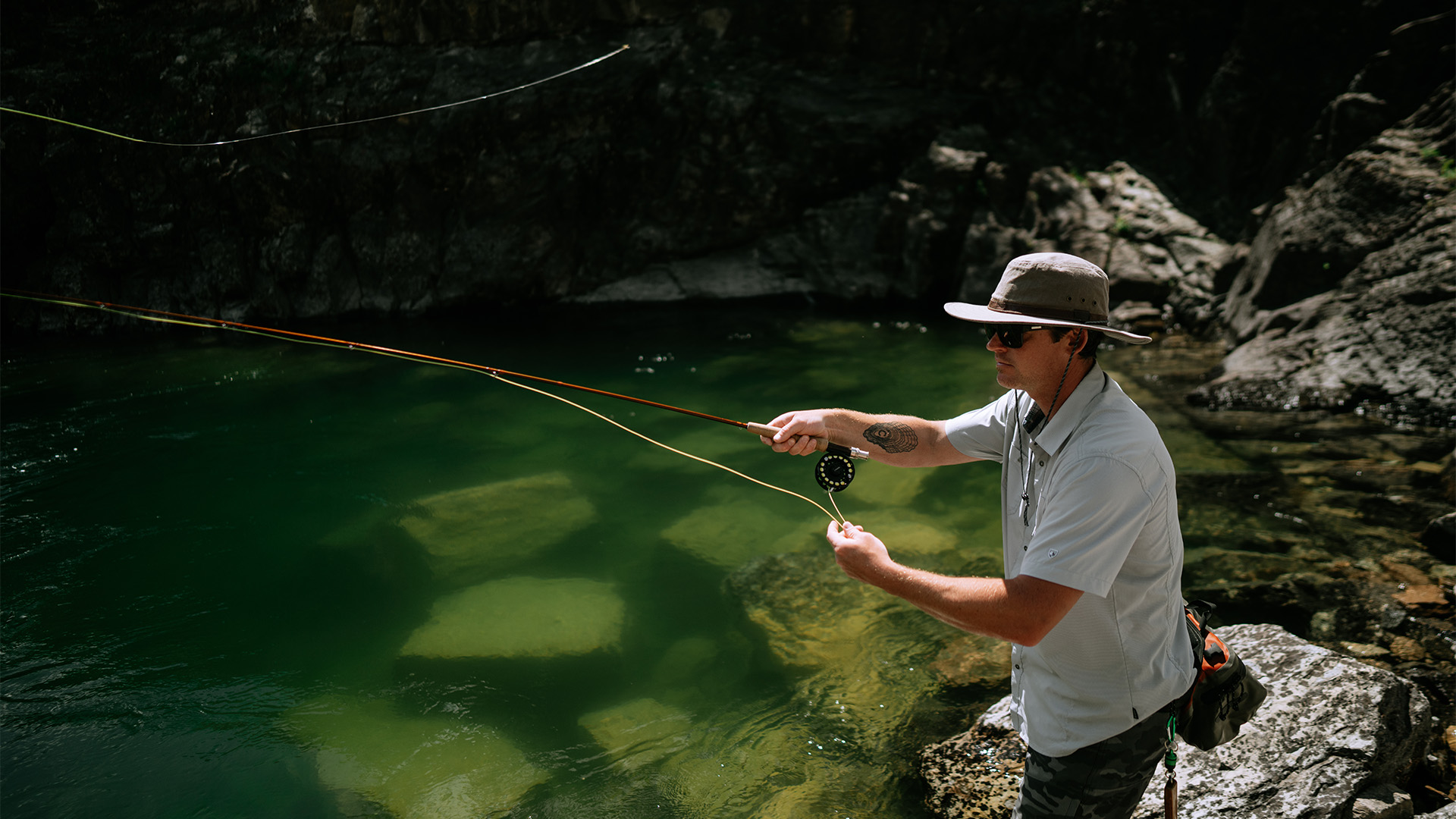
Choosing the Right Spot
When it comes to fly fishing, location is key, and choosing the right spot can sometimes be half the battle. It's not just about a picturesque river or a serene lake; it's about knowing where the fish are hanging out and why. Always check local regulations and make sure fishing is permitted in the area.
Once you've got that covered, let's talk about reading the water. You're looking for places where fish might be hiding or feeding. Often, these are spots where there's a change in water depth or speed, like a pool behind a rock, the undercut bank of a river, or a submerged log. Fish love cover and these places offer protection and a steady food supply. Another thing to consider is the time of day. Fish are more likely to feed during cooler, low-light times, so early morning and late evening can be prime fishing times.
Lastly, check in with a nearby fishing shop or local anglers. These folks are usually more than happy to share a few insights into local conditions and favorite fishing spots.
We’ve made a list of the best fishing spots on Bull Shoals Lake and are working on making similar listicles for other fishing locations.
How to Handle Fish Safely?
After the fish takes the bait and you win the tug-of-war, what a lot of fly fishermen do is what's called catch and release. It’s a practice when they catch the fish with a barbless hook, reel it in, look at the beauty of the fish, unhook it, and slip it back into the water.
Here’s how to do this correctly:
- Unhook the fish in the water or very close to the water. If you lift the fish out of the water at all for photos to show your friend, hold it gently under the belly, lift it up and make sure water is dripping off that fish at all times. If the drip starts to slow down, wet the fish again.
- Make sure you let the fish go facing into the current. If it's exhausted, it can drown facing the wrong way.
- To push the fish into the current, put your hand underwater and just gently tip your hand up and let the fish slide out of hand and swim away.
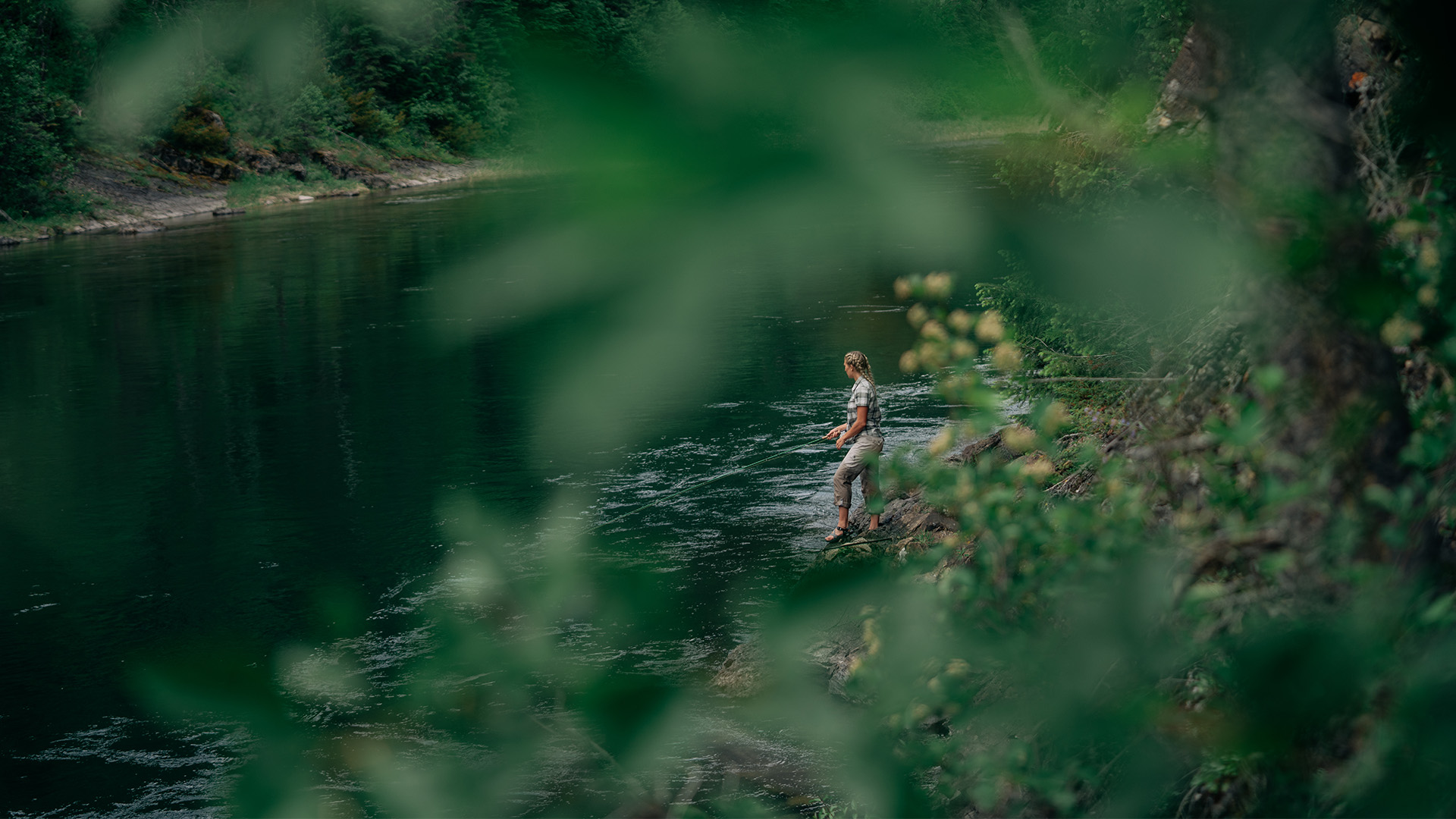
What if the Fish is Fighting to Get Away?
Ah, the classic tale of man versus beast! When the fish strikes back, the game is on. The first rule of thumb is to keep your cool. It's easy to get carried away in the excitement, but staying calm is key. Keep a firm grip on your rod, and get ready for the dance.
When a fish starts to fight and run, your first instinct might be to hold on tight and resist. However, in fly fishing, you want to do the opposite. If a fish wants to run, let it run a little bit. Your reel’s drag system is designed for this very moment. It allows the fish to take out the line under tension, which tires it out while also preventing it from breaking off or running too far.
Keep the rod tip high, at about a 45-degree angle, and maintain steady pressure on it. This way, you maximize the rod’s flexibility and allow it to absorb some of the tugging.
What if the fish is particularly combatant? If it's making powerful runs or diving deep, you can apply side pressure. By shifting your rod to the side, you can throw the fish off balance and guide it away from any obstacles. Make sure to alternate sides to keep the fish guessing and prevent it from gaining momentum in one direction.
As the fish starts to tire, it's time to reel it in. Lift the rod slowly, pulling the fish toward you, then quickly lower the rod while reeling in the slack line. This pump and reel method is a great way to efficiently bring the fish closer while still leading the dance.
When the fish gets close, use a net and gently scoop it up.
Our Beginner’s Tips on How to Prepare For Fly Fishing
Learning how to fly fish sometimes isn’t easy for beginners. Here are some tips that’ll get you prepped and ready to hit the water.
- Go simple on gear: To start, all you really need is a rod, reel, and some basic flies. A beginner's combo kit can cover it all.
- Practice makes perfect: Before you hit the water, spend some time practicing your cast in an open space. Your backyard is a great place to start.
- Layer up: Weather can change quickly when you're out on the water. Dress in layers so you can adapt.
- Hydrate and snack: Bring plenty of water and some snacks. Casting and reeling can leave you peckish.
- Check local regulations: Every area has different fishing laws. Make sure you're fishing legally and ethically.
- Enjoy the process: Take your time to practice. You're not going to become Flip Pallot on day one, and that's okay.
- Watch and learn: If you can, go with a friend who knows the ropes or consider a teacher. You can learn a lot from watching others.
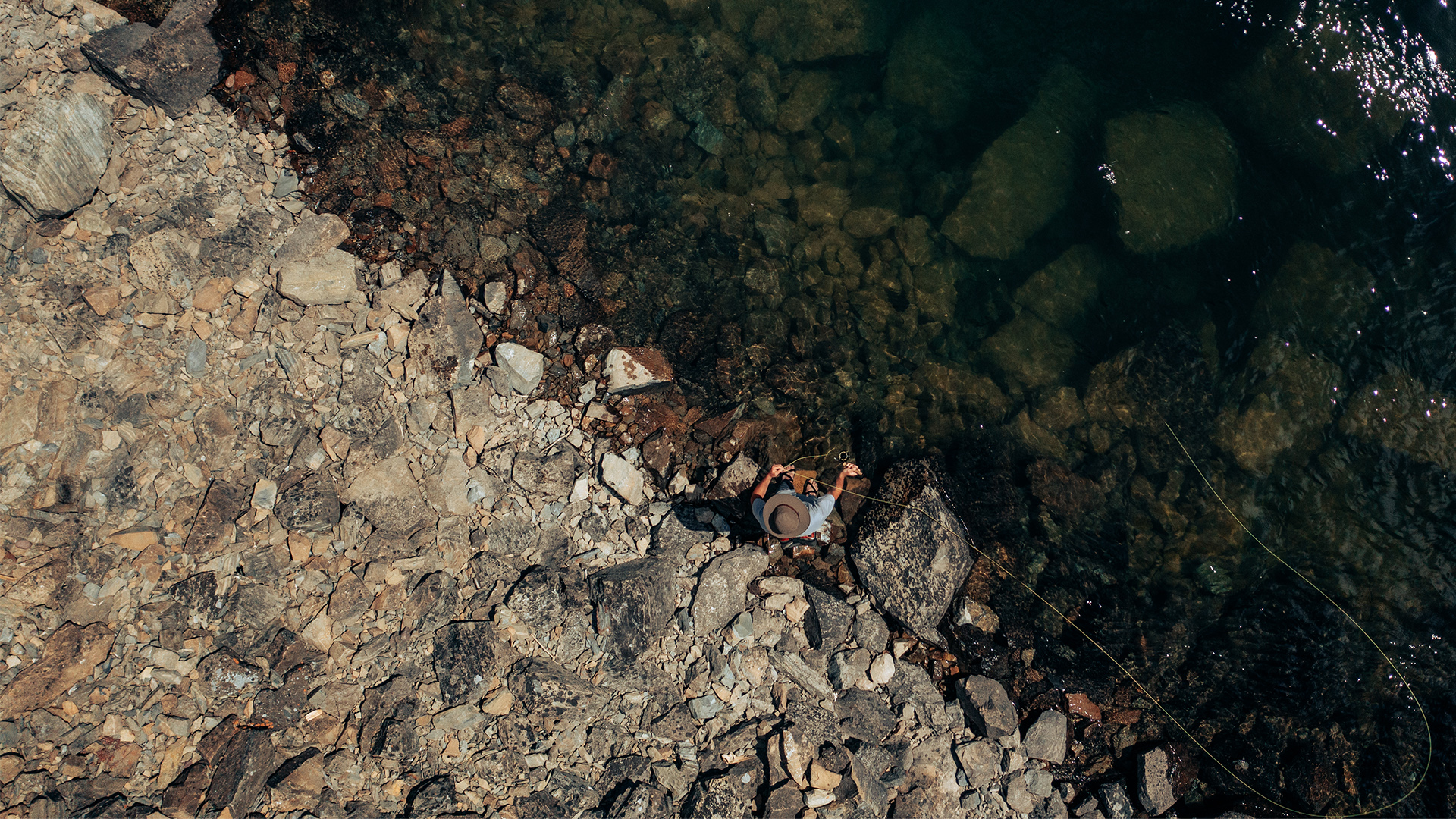
Final Thoughts
The less gear you have to track down, maintain, and pack up, the more likely you'll be to grab your gear and send your line over to your local waters. You'll avoid blowing your budget on unnecessary stuff that bogs down your experience, and you'll gain a better understanding of what you'll want for your next rod, reel, and line weight combo—and which world-class trout rivers you'll want to visit on your next vacation!
FAQs
What are fly fishing disadvantages?
Fly fishing can be challenging for beginners, with a steeper learning curve than other types of fishing. It is more physically demanding due to casting techniques. Fly fishing gear can get pricey, especially for high-quality equipment, and it's less effective in certain fishing conditions, like very windy weather.
Where is fly fishing most popular?
In the USA, fly fishing is a big hit in the West, with Montana, Colorado, and Wyoming leading the pack thanks to their stunning rivers and streams. The Catskills in New York, often considered the birthplace of American fly fishing, also remain a top destination. And let's not forget about the Pacific Northwest's salmon-rich waters!
Is fly fishing versatile?
Fly fishing is incredibly versatile. You can fly fish in saltwater or freshwater, rivers or lakes, catching everything from trout and salmon to bass and even tarpon. But any spot with clean water and fish can become a fly fisher's paradise!
Are flies better than lures?
It's not so much a question of better, but more about what's suitable for your situation. Flies can imitate specific insects, making them great for certain species like trout. Lures, on the other hand, can be versatile and effective for a range of fish species in various conditions.
Why are fly rods so expensive?
The cost of fly rods comes down to the premium-grade carbon in the rod blank, its well-balanced construction, the high-quality resin, and top-notch materials in the grip and reel seat. Add in superior dampening for smoother casting, and you've got a recipe for a higher price tag.
